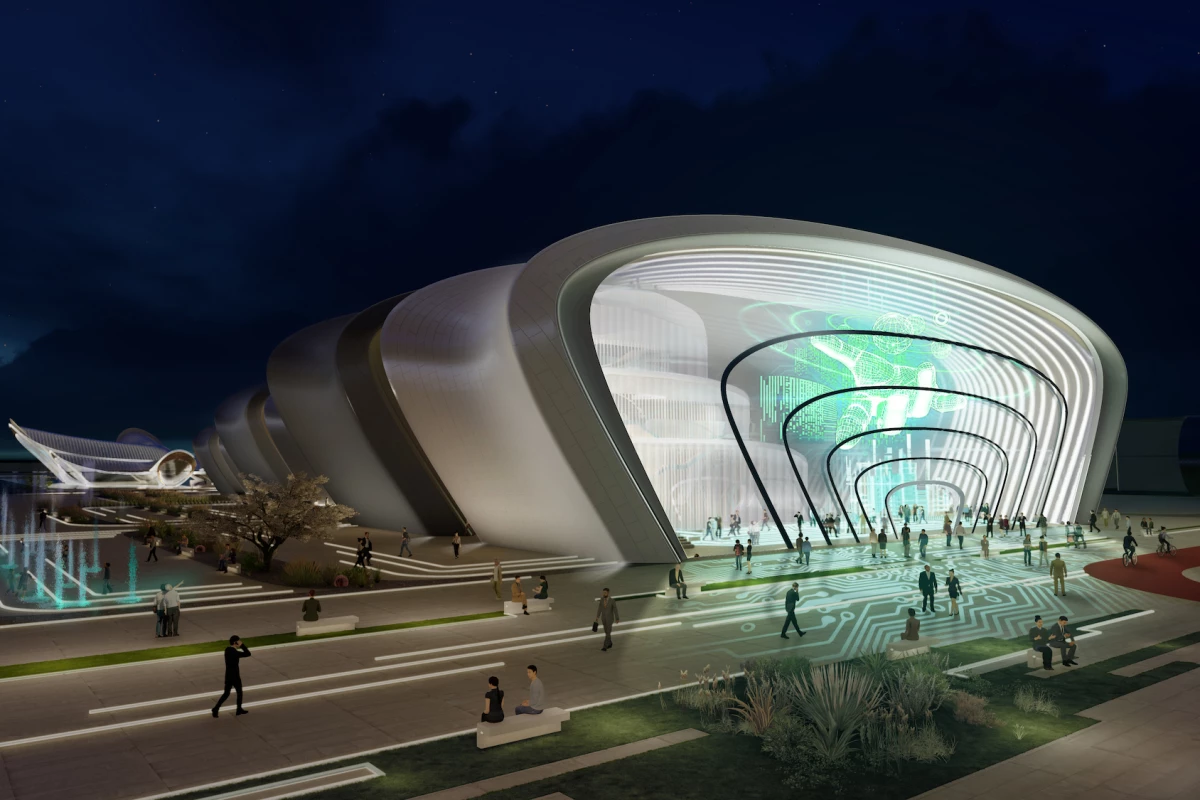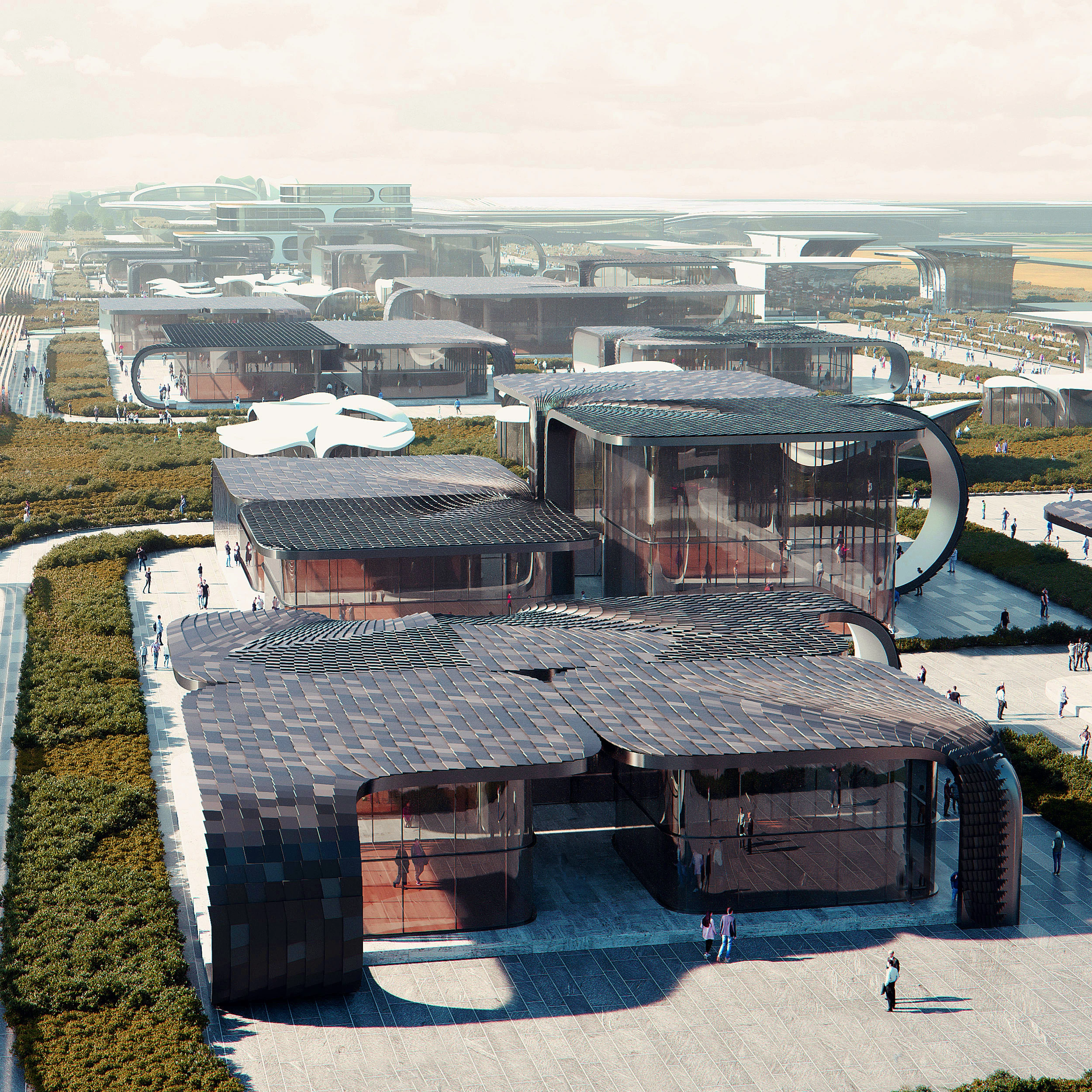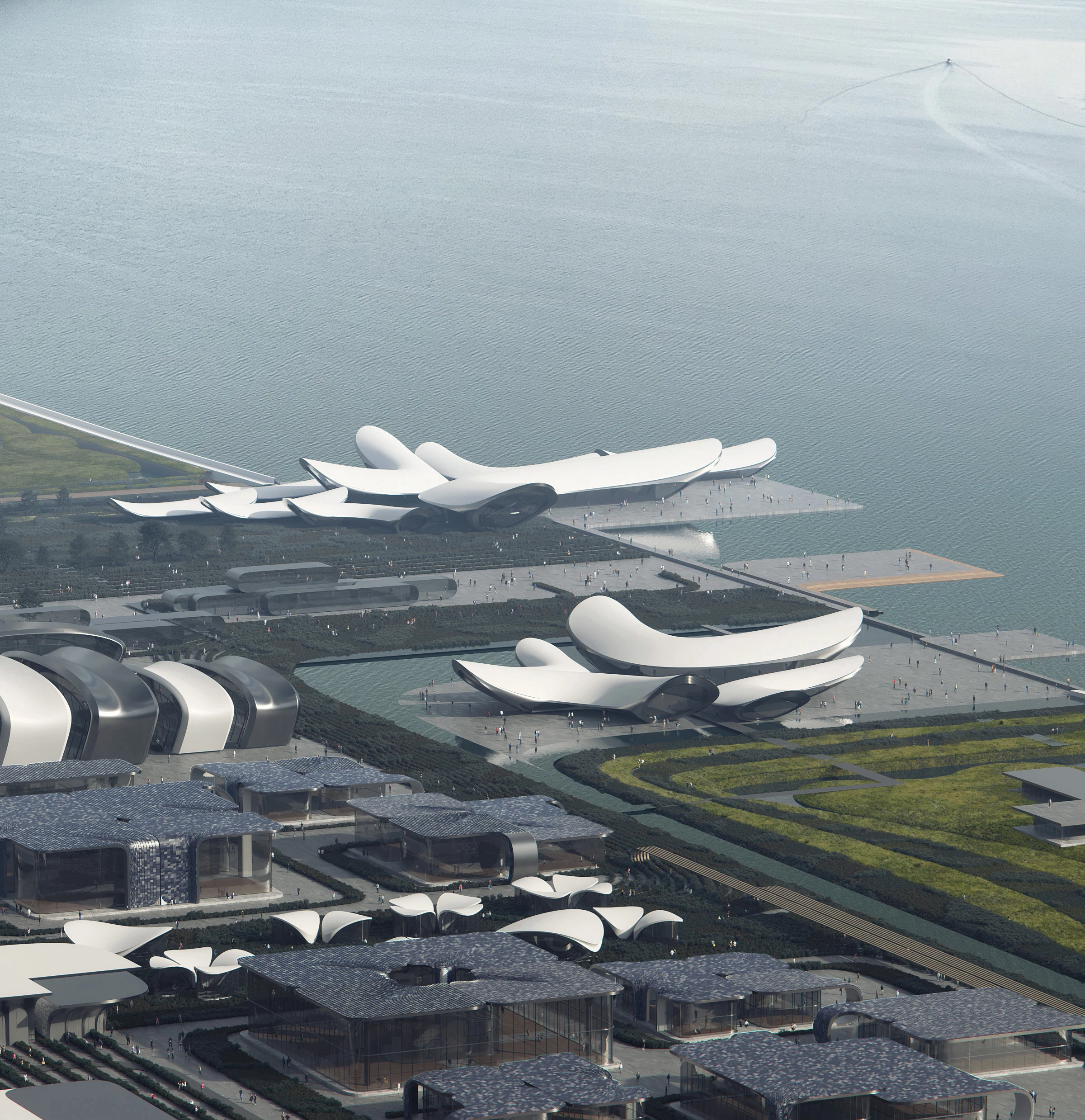Once the war with Russia is over, Ukraine will need to rebuild. As a small part of this effort, Zaha Hadid Architects (ZHA) has revealed plans to host a global trade fair in the country's port city Odesa. Assuming it goes ahead, the event will be centered around demountable pavilions that are powered by sustainable tech that can feed excess power back to the grid.
The project is named Odesa Expo 2030 and ZHA is handling the overall masterplan. It will feature multiple clusters of pavilions which showcase the firm's usual penchant for futuristic-looking curving facades and generous glazing. A lot of work went into less glamorous structural concerns too: in addition to being easy to dismantle, the buildings will be constructed using recycled materials and debris, and are designed to fit into barges for easy delivery via the nearby Black Sea. Another major focus is to ensure no useful materials go to waste in a country that badly needs all the concrete and steel it can use.
"The bespoke approach to designing and constructing national pavilions of previous expos has often resulted in significantly increased construction costs and time, together with higher embedded carbon and reduced flexibility for any future use," explained ZHA. "Addressing these issues, Odesa Expo 2030 will offer the participating nations the choice of a kit-of-parts to construct their pavilions. This flexible modular system will provide participating nations many varying options to design their pavilion using practical, creative and visitor-friendly principles that enable each nation to individually reinterpret the over-arching theme of Odesa Expo 2030 via their country's unique cultural expression."

Once the expo is over, all of the pavilion buildings created will be dismantled and transported for use across Ukraine to find new use as government and administration buildings, etc. Renewable energy sources will also be integrated into the design of the pavilions, including solar panels and wind turbines, providing power for the fair and for the local community.
ZHA has joined the Ukrainian delegation at the 171st General Assembly of the Bureau International des Expositions in Paris to present the proposal. If successful, the plan will be for it to be built in time for use in 2030. ZHA has also previously revealed plans to build elsewhere in Ukraine with its eye-catching Dnipro Metro stations.
Source: ZHA







